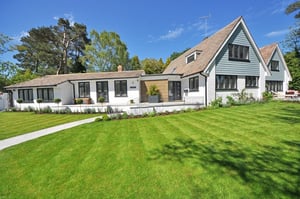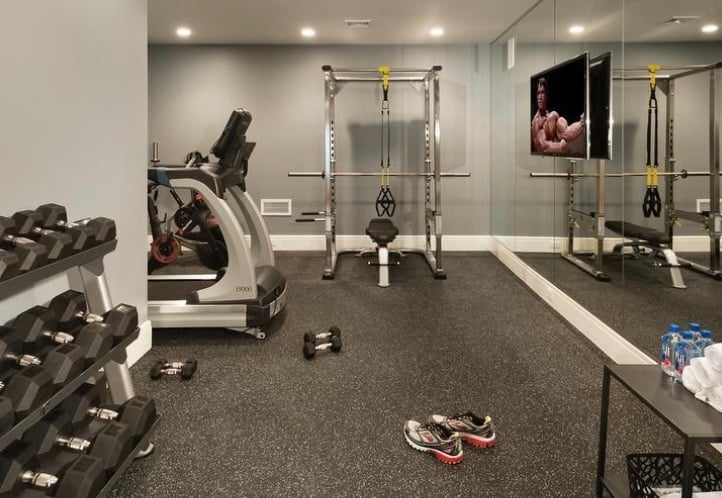 Fall, you’ve probably heard, is the ideal time for planting trees and bushes. If you’re “stumped” on which are the best for your landscape, this article is for you.
Fall, you’ve probably heard, is the ideal time for planting trees and bushes. If you’re “stumped” on which are the best for your landscape, this article is for you.
When used in landscaping as focal points or to fill in negative space in the yard, you get maximum impact from several well-placed bushes, shrubs, and trees. They provide privacy, shade, or serve as decorative elements that boost curb appeal.
But when you are choosing, be honest with yourself. Before you grab that spade and start digging, ask yourself the following four questions:
- What are you trying to achieve?
- Do you have the time needed for nurturing along a tree?
- Are you placing it in an optimal location?
- Is the species hardy enough for your planting zone?
Now, let’s review each of these questions. You’ll see why it’s critical to planting success to come up with a game plan before you plant.
1 – What are you trying to achieve with your tree, shrub, or bush?
First, what role will this plant fill? It might be that you want a tree to provide shade for the backyard. Or, you may be planning on decorative bushes around your home’s foundation. Know this before you begin shopping.
You want to ensure that you purchase the planting that’s the right size for its intended use. For example, you’d select low-growing bushes that you can keep trimmed away from window frames around your foundation. However, if you want to block passersby from watching you in your hot tub, you would want an aggressive grower.
2 – What’s your time commitment like?
Newly planted elements require a commitment of time from you to thrive. Some species will need daily watering as they generate a robust root system. Other plants prefer drier feet—which could be challenging in rainy fall weather (but would be excellent next summer if you can nurse them through).
Read the tags on the plants when you head off to the nursery to determine if your selection requires more time and energy than you care to commit.
3 – How about the location?
Also, consider the location where you’d like to place your bush or tree. Planning early for future growth can save you headaches in the long haul.
For example, a statuesque maple tree would be stunning in your front yard. But if it runs under overhead power lines, it could become detrimental down the road. Or, if you plant crepe myrtle trees too close to your home, their long root systems could disrupt your foundation.
And thinking about location includes assessing what is down below the earth. Be certain that you contact the Call Before You Dig line. They send a technician to your property to make sure you’re not going to hit a gas, water, or power line. The number you can call in Virginia, Maryland, and DC is the same--811.
4 – Is the species good in our planting zone?
When you visit the garden center, look at the tag in the planting pot. It will indicate the USDA hardiness zone for the plant you are selecting. Be sure that you choose trees and bushes that will thrive in the DC metro area!
Residents of DC and the immediately surrounding communities in Maryland and Virginia are in either zone 7a or 7b. Seek out plants that will tolerate our temperature extremes of hot summers and cold winters.
Final Tips: Selecting Healthy Trees and Bushes
Now that you have a clearer image of what to search for, here are some shopping tips.
- Instead of a big box store, shop local. Yes, it’s great for the economy. However, the real reason is that you will often save money on expensive trees and bushes when you purchase directly from the nursery. Plus, you will get firsthand expert advice from the grower.
- Look for an overall healthy tree. The foliage on the shrub or tree should be full and colorful. A sturdy trunk and attractively shaped and spaced branches are must-haves.
- Check for pliability. Of course, a tree that’s in a pot is challenging to keep adequately watered. Unfortunately, that can also take a toll on the tree’s well-being. Ensure that the stems and branches have a pliable feeling to them. You should be able to bend them, but without snapping them apart. Otherwise, the brittle nature indicates under watering.
Once you’re ready, head out to the nursery confident in making this purchase. Your new tree or shrub will make an excellent addition to your landscape!
Khalil El-Ghoul
Khalil El-Ghoul is a seasoned real estate broker actively helping sellers and buyers throughout Northern Virginia, DC, and Maryland. Known for his no-nonsense approach, Khalil combines expert market insight with honest, objective advice to help buyers and sellers navigate every type of market—from calm to chaotic. If you’re looking for clarity, strategy, and a trusted partner in real estate, he’s the one to call. 571-235-4821, khalil@glasshousere.com







